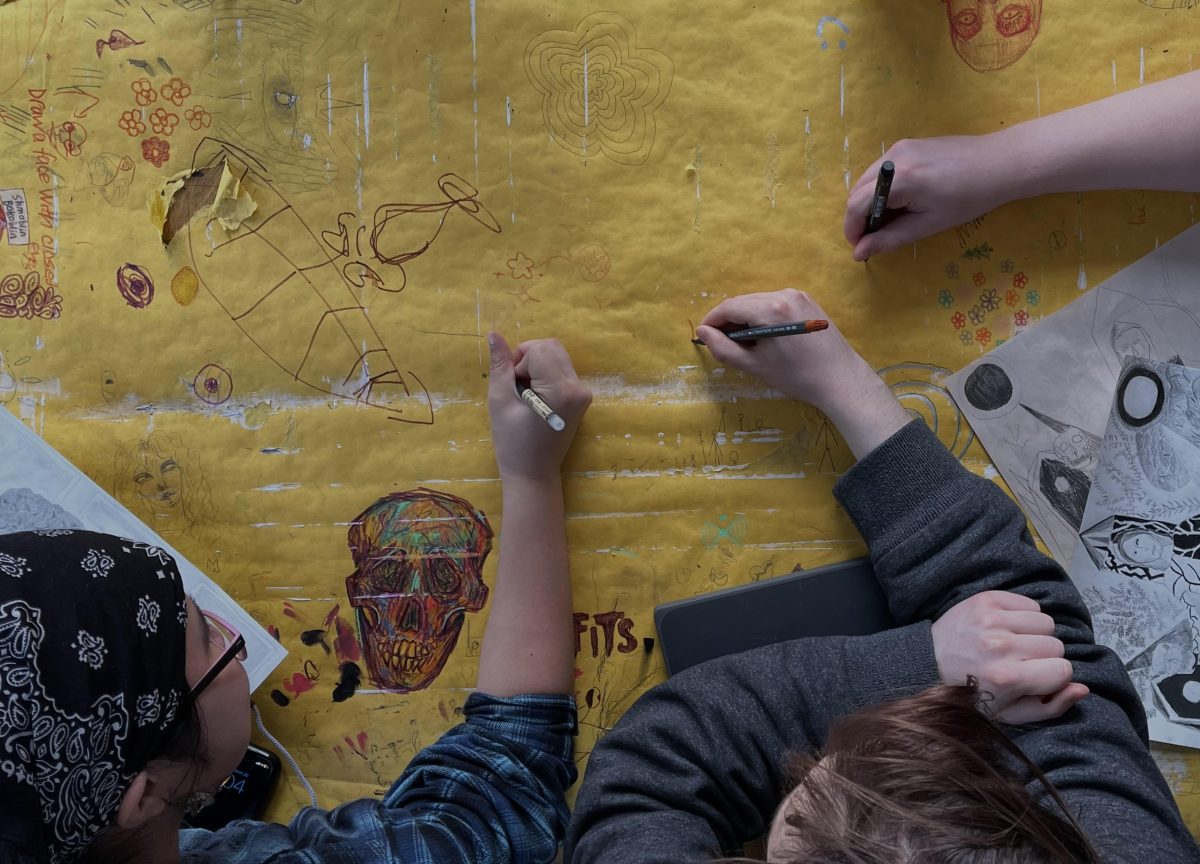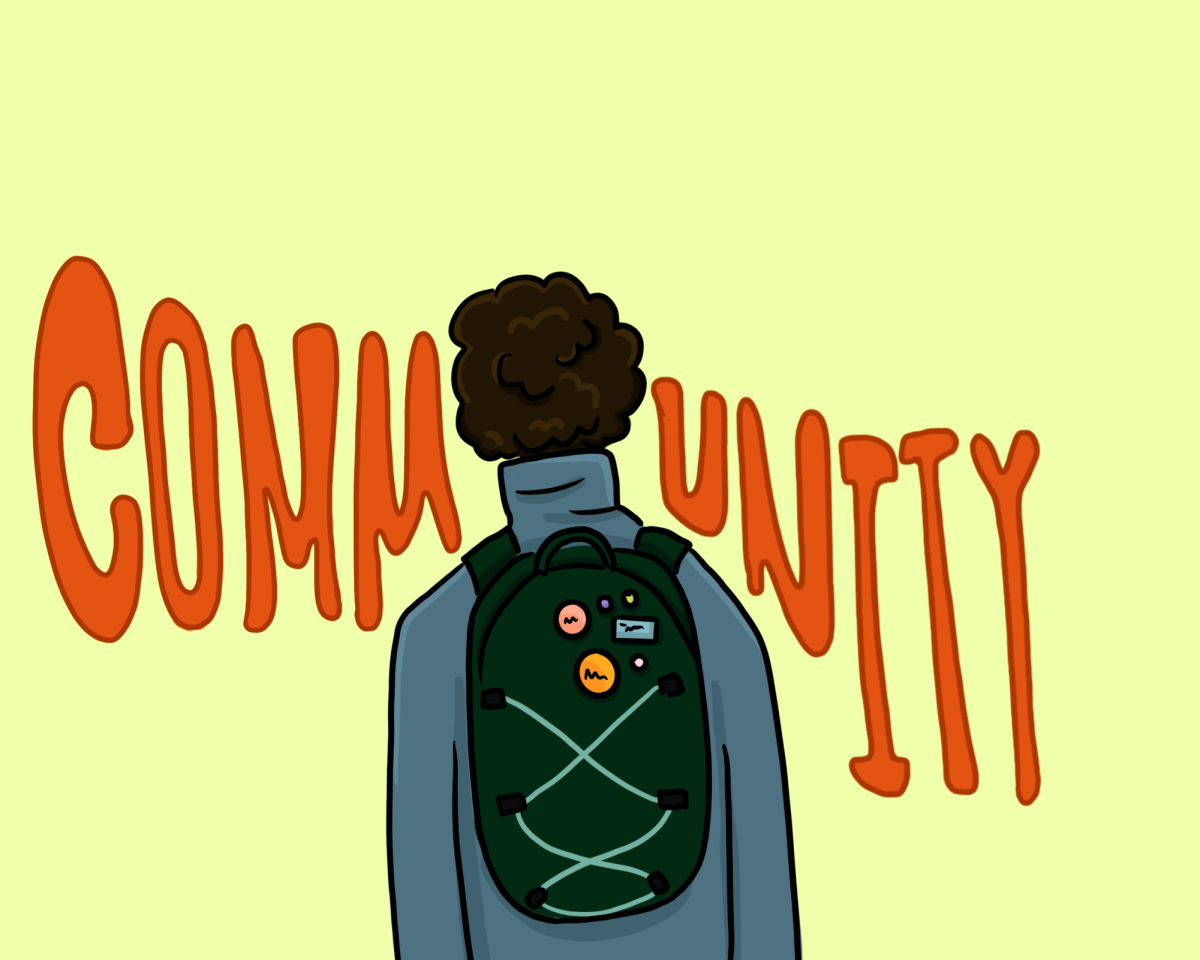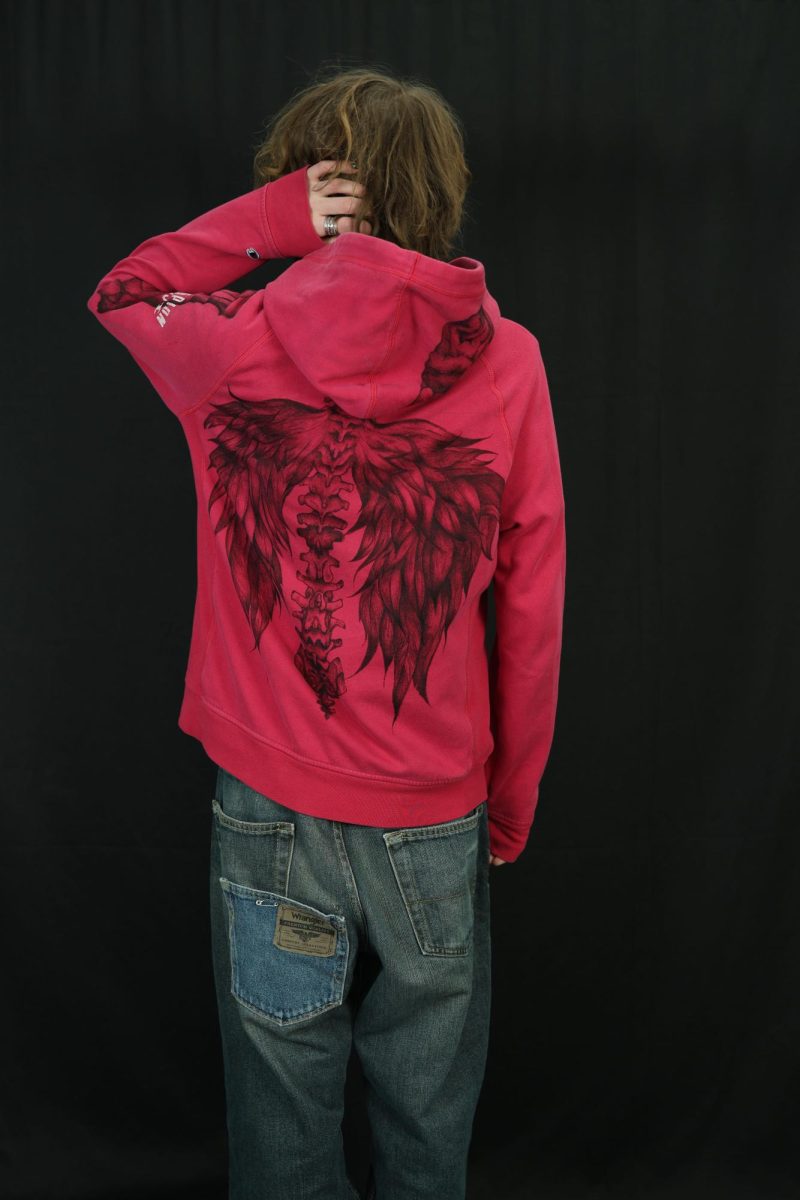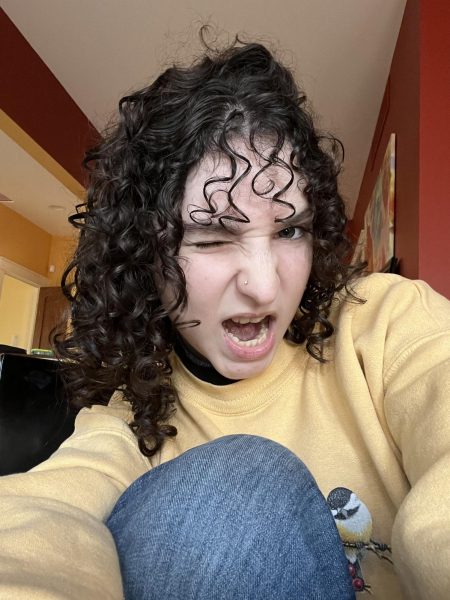For Hannah Crabtree, teaching art is a way to give students skills that will help them for the rest of their lives. Crabtree uses a teaching style called “Teaching Artistic Behaviors,” or TAB for short. TAB allows students to have much more freedom than they would in a traditional skills-based class; kids can work on whatever project they fancy.
“When I started teaching high school I was not sure how [teaching TAB] was going to go because I did a bunch of research and everything I read said that you absolutely cannot do TAB with high schoolers,” Crabtree said. “But I didn’t care, so I did it.”
The first class in a TAB week is a traditional skills-based class where students can learn techniques; Crabtree uses a traditional project where students are given a prompt and then have to brainstorm different ideas to respond to the prompt. The second class of the week is an open-studio-style class where students can choose to work on anything they want.
When Crabtree was studying to become a teacher at Bowling Green State University, they were able to spend their observational hours at the Toledo Museum of Art, where they worked. Through the museum, she was able to observe other art teachers, and through that, she learned about TAB.
“I basically changed my whole teaching style,” Crabtree said. “I started doing [TAB] but I never went full TAB because I’ve read the critiques of it; that it’s too open-ended, too loosey-goosey.”
However, Crabtree believes that the exact open-mindedness that is critiqued is what makes great artists and thinkers. Crabtree explains that TAB incorporates a lot of choices, which is very important for building an authentic learning situation. Crabtree found the new teaching style exciting because one of their big pet peeves as a student would be overly prescriptive instructions for art.
“It just seems really counterintuitive. It seems to be helping us develop skills such as creativity, divergent thinking and problem-solving, yet a lot of the time it’s just like, ‘Are you good at following recipes?’ and you don’t really get a chance to practice independent thinking.” Crabtree said.
Crabtree hopes to teach her kids that when they encounter problems, they can create their solutions with patience and confidence.
“The whole point of TAB is that the ‘artistic behaviors’ are the characteristics that will serve you in every area of your life,” Crabtree said.
She believes that traits like patience, collaboration and resilience will support students with every problem that they encounter.
“Art is the vehicle for trying to practice these characteristics,” Crabtree said. Giving and receiving feedback, thinking abstractly and taking risks are among the skills that Crabtree wants to teach their students. They explain that students don’t have many opportunities to practice these skills because art is not treated as a core subject; it’s seen as a “soft skill.”
Along with teaching artistic behaviors, Crabtree seeks to create a calm and welcoming environment in her classroom. She hopes that when students walk into her classroom it can feel like a marked break from the rest of their day.
“I want it to feel like a space for students to work through what they need to work through and not be worried about it being pretty,” Crabtree said.
Crabtree takes inspiration from her eleventh-grade English teacher. At the end of each day, there would be a queue of people waiting in the hallway to talk to the teacher about a plethora of different topics.
“To me, it was evident that she had been able to make a connection with a lot of different people… she was really approachable but also had a high standard at the same time,” Crabtree recalls the project-based lessons their teacher implemented with fondness. As she became a teacher, she appreciated her English teacher’s practices even more; they were doing engaging activities that motivated her current practices.
Crabtree believes that we are a collection of a lot of people that we meet in different parts of our lives, and she feels lucky to have lots of friends who are teachers.
“I feel like I’m able to continue to grow in that way, through conversations and thinking about what I do and why I do it and how it can be more equitable and meaningful.”
Through working at the Toledo Museum of Art, Crabtree has been in many co-teaching situations. This allowed them to interact with people who were very different from them and had different positions.
“I think all teachers are different and that’s ideal,” Crabtree said. “If you have a variety of adults in your life, hopefully, you can vibe with one of them. If everyone’s the same sort of cookie-cutter teacher, then you’re going to have a large group of people who don’t feel like they can have a meaningful connection with somebody.”
Through TAB, Crabtree seeks to grow the skillsets of her students artistically and practically.
“There’s power in self-expression,” Crabtree said, and she wants to help her students harness that power.
















